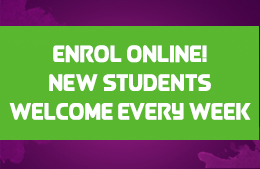Setting up your Home Learning Space
Looking to improve your home practice space, or get started learning via a virtual classroom? Check out some of our tips and suggestions for setting up a home learning space that’s fun, functional and encourages learning.
1. Know your Online Resources
If you are learning a particular curriculum from home, for example the WAPS Virtual Class system, ensure you have access to your required apps, have a login ready (ideally under the student name, so teachers can easily identify everyone), and have checked if you need to provide any resources. For WAPS students learning at home during the COVID-19 period, ensure you’ve checked out your class Resource folder, and have your Zoom app installed and ready to use.
We recommend using a Quick References folder for all of your handy links. WAPS students will find a Quick Reference document in their Zoom Resources folder, so that all their handy links are in one place. If you don’t have one, you can make your own by bookmarking important sites in your browser, or creating a document or folder where all of your online learning links live. This will save you time each time you have to log in!
2. Music, Tech and Devices
If you’re learning online, you’ll definitely need working Wi-Fi or another way to access data download and upload. If you’re learning outdoors where there’s more space, check that your devices are still within range of your router.
Your learning space should also have access to a stereo or other device to play music. You should not need to play music during your virtual classes, however you should always have a way to play music to practise to outside of class time. We recommend using a powerboard so that you can power all required devices at once. Your stereo, laptop, phone charger and printer should all be ready to use at the touch of a button, without the hassle of switching chargers or unplugging devices.
Are you required to complete worksheets or other similar activities? Make a plan early – will you edit documents or colour-in pages on your tablet or device, or do you prefer to print on paper? Ensure you are set up for either option so that you can participate in all activities without having to worry about having the right devices set up.
3. The Right Space: Balancing Privacy with Supervision
While learning online, students should be in a space in (or out of) the home where background distractions and noise are limited. Having your family, housemates or pets wander through the frame may not only distract you, but your classmates too. Be sure to mute your microphone if you are in a particularly noisy area of the house – you can always unmute it if you need to speak briefly.
Children and teens learning online should always be supervised by an adult, in much the same way as students are always supervised by our staff in the studio. This is to ensure students’ safety, and to assist younger children with focus, participation and behaviour.
Try to avoid learning in a backlit area (i.e. with a window behind you) as it may be difficult for your classmates and teacher to see you on your screen. Put strong light sources in front of you if possible rather than behind.
You should have a space of at least two metres squared to learn in, but the bigger the better. Many skills can be adjusted to be performed on-the-spot rather than travelling, and more skills with higher potential for injury (such as acro) should not be practised at home during virtual classes. Instead, working on progressions will ensure your skills are maintained and your technique improved, until you have the opportunity to perform acrobatic skills in the safety of a supervised studio.
4. Know your Home Resources
What do you need in order to learn effectively? It’s a given that piano students will need to ensure their virtual learning takes place at their own instrument, but what about music, dance and drama students?
If you’re learning online and you’re not sure what you need to provide, you can check your Class Folder to see if you need to provide something for class that day. Your teacher may request that you provide a particular prop or resource to help with class, or even to spark inspiration in a creative exercise!
Stay tuned for our upcoming blog post about DIY home resources for dance and music, and in the meantime, check out these few ideas to get you started:
– Don’t have a ballet barre? Use your kitchen bench!
– Don’t have a stretching band? Use a scarf or teatowel!
– Want to make music with percussion instruments? Fill a container with rice or dried beans for instant percussion fun (plus you can also get creative and decorate!)
5. Get Creative and make it Fun
Particularly if learning online and practising at home is new to you, it’s important to get started on the right foot. Make sure your space is welcoming – you should want to learn there! This is the fun part.. apart from being clean, tidy and spacious, it should be organised and beautiful too.
– Place your class props and resources such as pencils, notepads, stretching bands, yoga blocks, or musical instruments out of the way in storage boxes or containers. This way your space will have all the tools you need, without the clutter and confusion. If you’re settling in for the long haul, having tidy, labelled storage of props for performing arts lessons and practice will motivate you to make the most of your learning opportunities and have a positive effect on your long-term progress and achievement.
– Make your space beautiful – you should be proud and excited to learn there. Consider repurposing some battery-operated fairy lights from elsewhere in the house (or even the Christmas decorations box), sticking your favourite motivational quotes to the walls or a pinboard, or even bringing a vase of flowers or foliage from the garden and changing it every few days – these may even brighten up your classmates’ days too!
– Spending lots of time in your learning space? Give yourself plenty of rest breaks and set up an area where you can keep some healthy snacks and a water bottle for your chill-out breaks. We recommend keeping your phone there too, so that social media breaks don’t distract from your learning!
6. Facilitate Practice
Your teachers have always said it: Practice makes perfect.
If you’re at home more than usual, now’s the perfect time to put that statement into … well, practice!
Check out our recent post with tips for parents on supporting home practice to get inspired – are there tactics you can try with your children, or yourself as an adult learner? Over the coming weeks, try putting into practice techniques such as:
– A home practice chart on a wall or pinboard, where each day’s practice is recorded. At the end of the week, see how long you practised for, but remember quality is just as important as quantity! If you’re not feeling focused and ready to correct your technique or mistakes, take a breather – an hour of poor quality practice won’t help. Set yourself a goal, and if you can reach that goal (let’s say 30 minutes a day, Monday to Friday for example), celebrate with a pre-determined reward.
– Recording yourself practising or performing. Whether you upload it to share with family and friends, or simply use it to watch and critique, you’ll find it a very helpful experience!
– Each day, practice something from your “repertoire” – this means pieces that you’ve already completed in the past. It would be such a shame for you to work for months on a piece, only to forget it after concert time!
Further Reading?
Check out:
– Blog Post: Tips on DIY Dance & Music Resources
– YouTube: Tips on Setting Up Your Devices
Remember: When you learn in our studio, our first priority for you is your safety, so when you learn at home, that needs to be your top priority too!
Always listen to your teacher’s instructions and follow them closely. Always ask questions if you’re unsure, and never perform something you’re unsure how to do.
Safety must always come first, and that’s why some practical lessons will run a little differently online than they do in the studio. If you’re required to sit and watch a demonstration, ensure you focus and listen to the teacher’s instructions. Often your WAPS teacher will record lesson segments and upload them for you to watch later, in case you forget. If you do not have the space, or an adult to help spot or monitor certain skills, do not try them at home – remember the lessons you’ve learned, and then focus on practising your progressions, to ensure your skills and technique are sharper than ever when you return to the studio.


























 Studio: 3 Price Street, SUBIACO WA 6008
Studio: 3 Price Street, SUBIACO WA 6008


